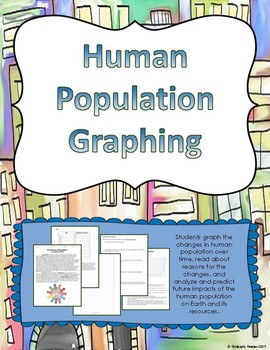Human Population Graphing Activity
- PDF
- Easel Activity
Description
Students graph the human population over time. Included is a short reading about reasons the human population has increased (written for students below 6th grade reading level to comprehend) as well as analysis or discussion questions for after the graph is created.
This activity is meant to help students understand that the human population is rapidly growing that that this has an effect on our resources, as well as practice in graphing and graph interpretation and analysis. This addresses the following standards:
NGSS-MS-ESS3-4: Construct an argument supported by evidence for how increases in human population and per-capita consumption of natural resources impact Earth's systems.
CCSS Math Standard CCSS.MATH.CONTENT.5.G.A.2: Graph points on the coordinate plane to solve real-world and mathematical problems.
I use this activity with my 6th grade students in our "Earth and Human Activity" Unit. Also included is a Teacher's Resource page with what the graph should look like and answers to the analysis questions.
Key Vocabulary: population, growth rate, exponential growth, natural resources, resource depletion, population dynamics, carrying capacity, graphing, Earth systems






